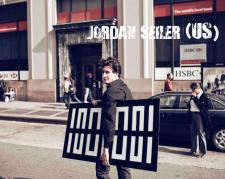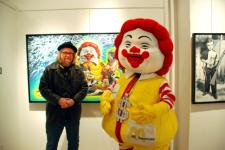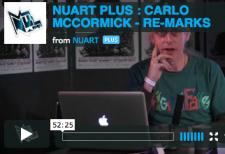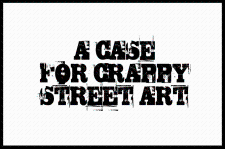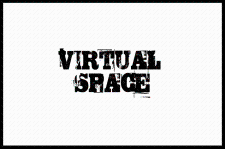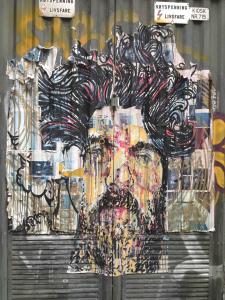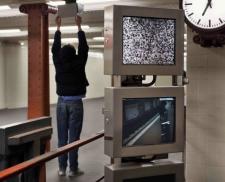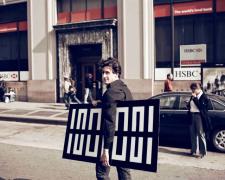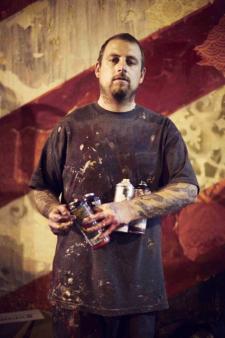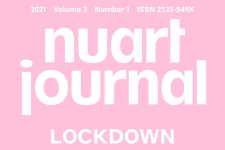A CASE FOR CRAPPY STREET ART
Several of the participants in NUART PLUS, the three day conference running parallel to Nuart 2012, offered tasj a taste of what is to come between September 27 and 29. Eirik Sjåholm Knudsen, a Research Scholar at the Department of Strategy and Management at NHH Norwegian School of Economics who initiated the “____capitalism?” project with Nuart in 2011, will introduce and moderate a panel debate on Day 2: Physical Space.
A Case for Crappy Street Art
By Eirik Sjåholm Knudsen
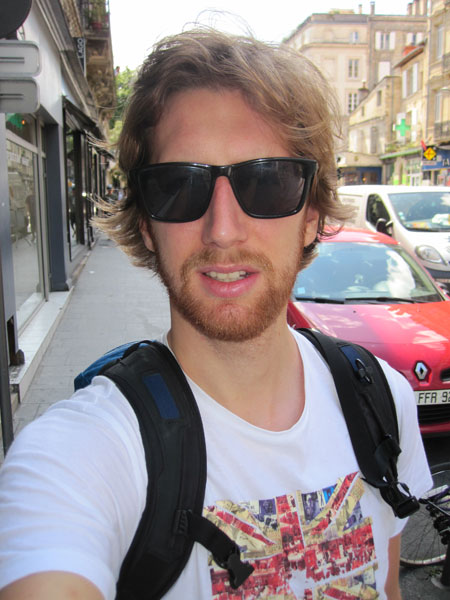
The Norwegian city of Bergen recently launched an action plan dedicate to street art and graffiti with the aim of i) increasing the quality of street art and ii) reducing the amount of illegal graffiti. As an economist, I find the first goal far more interesting than the second one. Because what are really the consequences of governmental interference in the street art scene?
The relationship between the government and the street art scene has so far been quite simple: The government set the rules (street art is illegal and you are sent to jail if we caught you doing it), and the street artists do their best to play by these rules (avoid being arrested). This simple structure has basically had two effects on the evolution of the scene. First, the illegal nature of doing street art has acted as entry barriers preventing other people than the most dedicated to do street art. Second, once you have passed the entry barriers, the street art scene has been totally unregulated with a free market structure. As no one regulates what can or can’t be done – or define what is street art and what is not – competition for attention among artists has secured that very much experimentation has taken place. With the introduction of street art blogs on the internet, the scene also got a channel where all these experiments could be tested on their peers and the rest of the global street art community. This way, the online street art community act as a selection mechanism making some ideas, artists and art prosper and grow, while others fade into the dark. These simple mechanisms have over the years created the vital, diverse and highly innovative street art scene we know today.
But what happens to this self-regulating mechanism if politicians start to intervene directly into the scene instead of just maintaining the “all street art is illegal” policy they follow today? Here are two predictions. First, by introducing “legal walls” the government tries to remove the entry barriers to the scene and thereby making it easier for new people to start with street art. However, the social codes of the scene are quite strict and well established, and it seems little likely that rookies will spray their first tag on top of an established artist’s piece on a legal wall. Therefore, these walls will primarily be the domain of well established artists, and the share of newcomers will be low. Second, a governmental focus on “high quality” street art and graffiti will also just favor the artists who are of “high quality” today, as all the experimentation and low quality work that people tend to do before they get well at something do not have a place in this new policy (too crappy for the legal walls, too illegal for the street). As the most ground breaking ideas and progress usually comes from experimentation among newcomers, this will lead to a more static and less innovative scene than we have today.
Luckily, it is naïve to think that the street art scene we know today will disappear just because the government intervenes with new methods. Instead, I think governmental intervention like the ones described above will divide the scene in two. One part of the scene will embrace the legal walls and respect the new rules of the government, while the other will continue along the traditional track by doing their art wherever they feel like putting it. The latter part of the scene will undoubtedly have a considerably larger share of “low quality” street art, but I am also certain that it is here, in the unregulated and anarchistic part of the scene that the most appealing, interesting and progressive work will be produced in the years to come. So, instead of trying to define what is “high quality” street art and encourage people to do such work, I think we should encourage people to take to the street, experiment and don’t give a damn whether their ideas turn out to be crap. At least if the goal is to maintain the vital, diverse and highly innovative street art scene we have today.
- Eirik Sjåholm Knudsen
THURS 27. NUART PLUS. MENTAL SPACE
Full program for Nuart Plus opening day exploring our "Mental Space" featuring Jordan Seiler, Ron English & Saber. Moderated by Carlo McCormick.
THURS 27. POPAGANDA. THE ART AND CRIMES OF RON ENGLISH
Film Screening with introduction and Q&A from Ron English and Evan Pricco (Juxtapoz)
THURS 27. STREET ART TOUR
Jordan Seiler (US) and Rj Rushmore (US) provide an introduction to Street Art V''s Advertising in the public space.
THURS 27. JON BURGERMAN WORKSHOP
A PRACTICAL HANDS ON WORKSHOP WITH UK ARTIST JON BURGERMAN, IN ASSOC WITH GRAFIL
FRI 28. NUART PLUS. PHYSICAL SPACE
Our second day explores the relationship between street art, urban planning and our physical environment.
FRI 28. FIGHT CLUB aka PUB DEBATE
A pub debate between Carlo McCormick and Rj Rushmore (Vandalog). Can art be truly appreciated on the internet. One thinks yes, the other thinks no. Join us for th...
FRI 28. STREET ART TOUR #02
Second in our series of Street Art tours, today hosted by author, curator and street art expert Tristan Manco (UK)
SAT 29. NUART PLUS. VIRTUAL SPACE
Our 3rd and final day explores Street Art's life on the internet and ends with a screening of Banksy's Oscar nominated "Exit Through the Giftshop"
SAT 29. EXIT THROUGH THE GIFTSHOP
Cinema screening of Banksy's classic Oscar nominated documentary. SF Kino for details.
SABER INTERVIEW FOR NUART 2012
LA graffiti legend Saber interviewed about his installation/performance during Nuart 2012
CARLO MCCORMICK : RE:MARKS
Carlo McCormick's key note presentation for Nuart 2012.
RON ENGLISH ON POPAGANDA
Evan Pricco (Juxtapoz) & Ron English discussing his long and illustrious career
MARION JENSEN (DK)
Urban development worker with Nuart partners Urban Sjøfront.
JON BURGERMAN (UK)
Artist, Illustrator and lover of all things burger related
EIRIK SJÅHOLM KNUDSEN (NO)
Research Scholar at Norwegian School of Economics
RON ENGLISH (US)
Ron English (born 1966) is an American contemporary artist who explores popular brand imagery and advertising.
SABER (US)
Renowned Graffiti artist, art activist and champion of freedom of expression. One of LA's leading voices against the prohibition of public murals.
RJ RUSHMORE AKA VANDALOG (US)
Founder and main man behind Vandalog website
TRISTAN MANCO (UK)
One of the worlds leading authors of Street Art and related books


